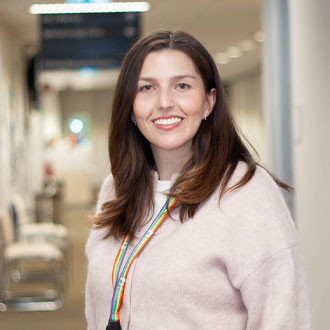About the Diabetes and Population Health laboratory
Our vision is to build the world’s first Big Diabetes Surveillance Data Centre to understand the evolving nature of trends in diabetes and its complications, and to identify where we need to focus our intervention efforts nationally and internationally. The framework aims to determine which traditional and emerging complications of type 1 and type 2 diabetes, especially in those with young-onset diabetes, will have the greatest impact on the health system.
Research focus
- Taking a whole-of-population data approach to understand secular and geographic trends in diabetes-related complications, and to assess the population-level impact of diabetes medication use in preventing complications in Australia.
- Investigating the global and country-specific rates, and trends in the incidence of diagnosed type 2 diabetes and mortality among those with diabetes (GLOBALDIAB).
- Identifying new biomarkers, and behavioural and psychological markers of diabetes complications of young-onset type 2 diabetes and tracking the natural history of diabetes complications among those with young-onset type 2 diabetes.
- Developing the best approach to distinguish people with type 1 diabetes from type 2 diabetes among younger people with diabetes (diagnosed at age 15–40 years) in Australia using administrative healthcare data.
We have a strong focus on using data linkage to answer significant research questions relating to the causes and consequences of diabetes. We have linked the National Diabetes Service Scheme (NDDS) which essentially serves as the Australian diabetes registry to a variety of administrative databases to ascertain the consequences of diabetes and its interactions with other chronic diseases. The NDSS has been linked to the Australian National Death Index, the Australian and New Zealand Dialysis and Transplant registry (ANZDATA), the Pharmaceutical Benefits Scheme and hospital admission data. Using a data-linkage model we will take a whole-of-population approach to study a range of important diabetes-related questions. This assembly of Australian contemporary data will be used to determine whether the availability of new therapies is affecting the population-level burden of diabetes complications, and whether any such benefits are being delivered equitably across Australia. The output of this work will inform us where the quality of diabetes care needs addressing. It will also be used to determine whether emerging complications of diabetes are becoming important contributors to disease burden.
We have also established an international collaboration which is the first global systematic approach to ascertain whether the incidence and mortality of type 2 diabetes is falling, stabilising or increasing. The principal aims of this project are to assess country-specific rates and trends from 1995–2018 in the incidence and mortality of diagnosed type 2 diabetes across the whole age range, in both high and middle-income countries, and to quantify the relative contribution of changes in mortality and incidence on the observed prevalence. This work involves obtaining data from 28 data sources across the globe. With this cohort of data from over the world, we are examining the patterns of young onset type 2 diabetes, (those diagnosed between 15 and 39) and we are examining patterns of cause-specific mortality (12 different categories) over time.
To map developing complications among those with young onset diabetes, a cohort of young-onset T2DM will be established and compared with an age-matched cohort of type 1 diabetes. Biomedical and psychosocial complications of both cohorts will be tracked over time and we will identify factors that predict trajectories and intervention points.







